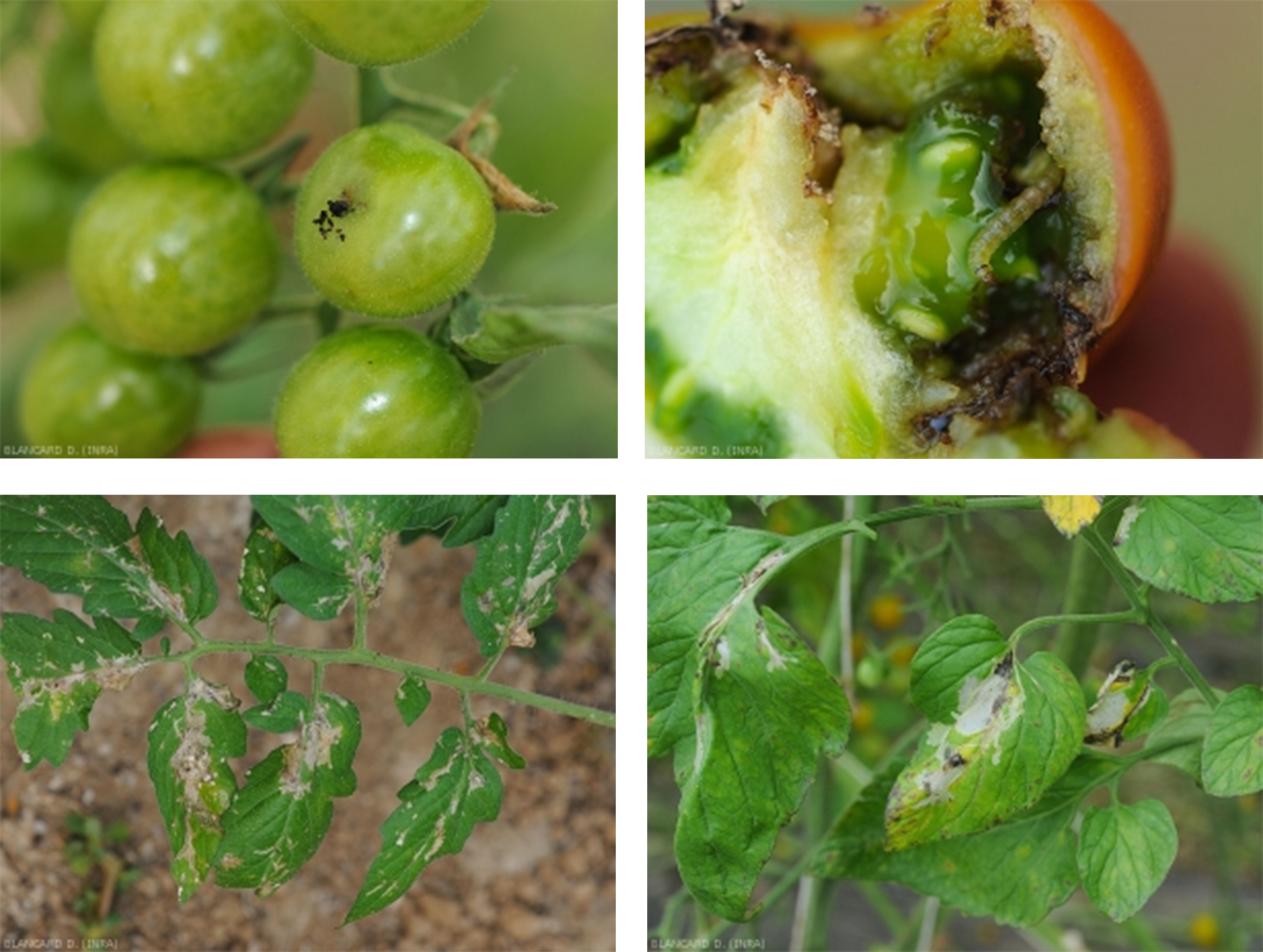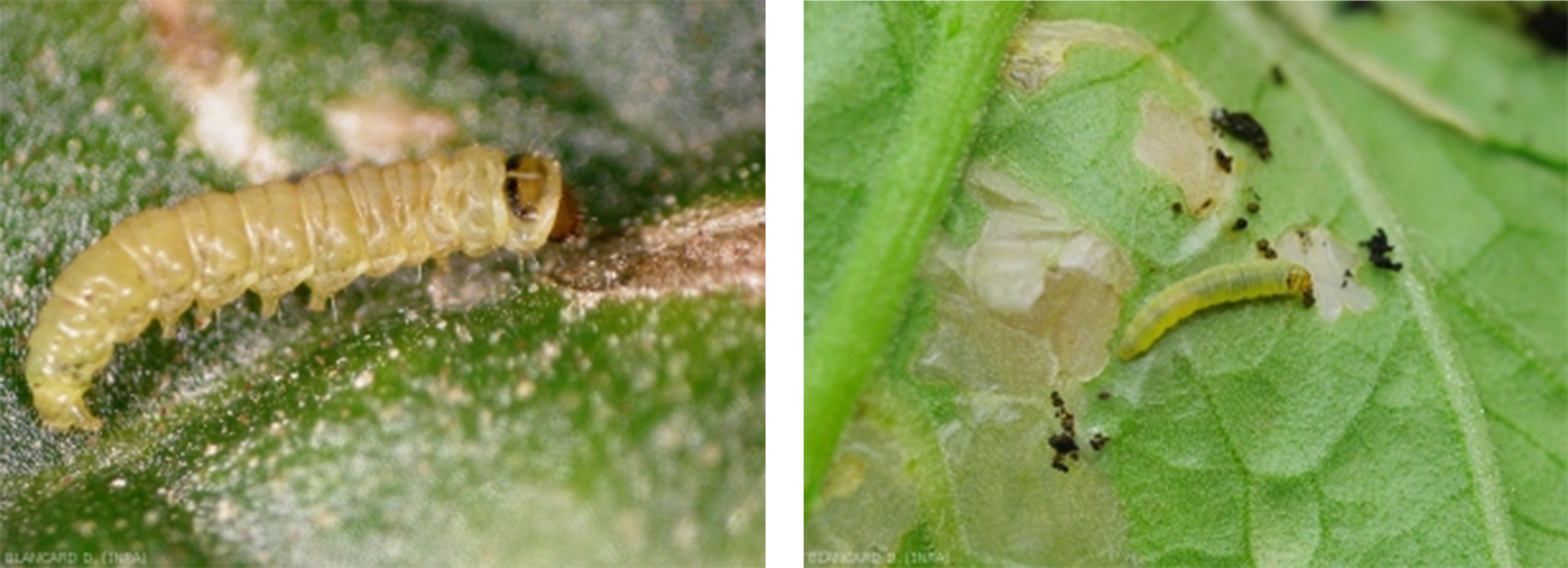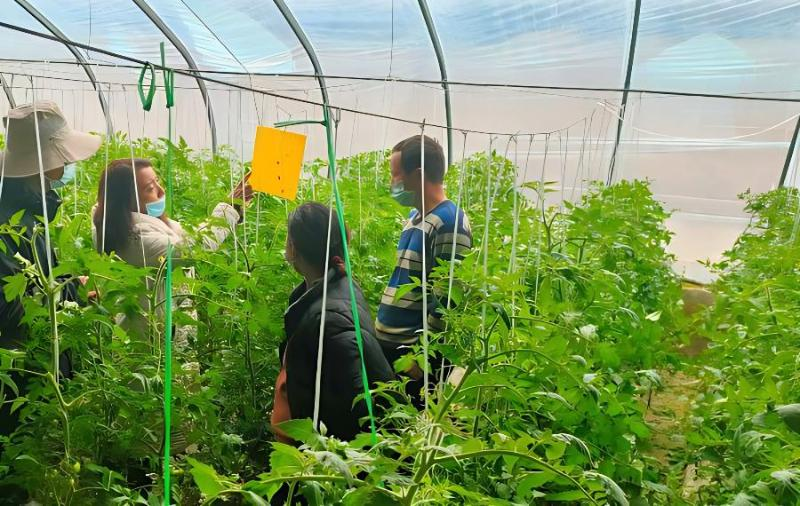Tuta absoluta, belongs to the Lepidoptera family of gelechiidae and is known as the "Ebola virus" of tomatoes, with characteristics such as high damage, rapid spread and difficult to prevent and control, preferring to feed on tomatoes, potatoes and other Solanaceae crops. It is one of the most destructive invasive pests as its larvae mainly infiltrate and feed on leaves, tops, axillary buds, young stems and fruit, causing 80% to 100% loss of fruit and vegetable production in severe cases. The insect originated in Peru in western South America and has now invaded more than 80 countries and regions, becoming an important pest of tomatoes worldwide and posing a serious threat to the health of the global tomato industry.
The host plants include more than 30 species from nine families, including Solanaceae, Chenopodiaceae, Leguminosae, Asteraceae, Spiniferae, Amaranthaceae, Cruciferae, Malvaceae and Gramineae. It mainly affects plants of the Solanaceae family, with tomatoes as its main cultivated host and black nightshade as its main wild host. Secondary hosts include potato, eggplant, pepper, ginseng fruit, tomatillo fruit, tobacco, beans and some non-cultivated species of powder blue tobacco, Datura, Lycopersicon Hirsutum, Peru Groundcherry, Lycium and mallow.
Tuta absoluta is a particular problem for tomatoes, as it can damage tomatoes at any stage of growth. Not only can it eat the flesh of the leaves, but also the fruit of the tomato.

In addition, once Tuta absoluta has become an adult, it lays its eggs. During the egg hatching period, the larvae are already sucking nutrients from the leaves. As it grows, the demand for nutrients increases. In this case, the leaves show up as curled leaves, or what we usually call ruffled leaves. This is a basic attack on the tomato leaves.

Agricultural control
Strengthen field management. Promptly remove diseased leaves, branches and fruits, take them out of the field in plastic bags and burn them centrally;
Physical control
Hang insecticidal lamps
Pheromone Lures and attractants to trap and kill adults.

Chemical control
Spraying chemical pesticides is currently the first choice for controlling the damage caused by Tuta absoluta, but because of the insect's stealthy nature, high fecundity and gnawing from the inside of the fruit, the control is not as effective as it could be, even with high intensity use of chemical pesticides. During the critical control period, use Kenvos Radi Plus, Emamectin benzoate 4% + Indoxacarb 12% SC